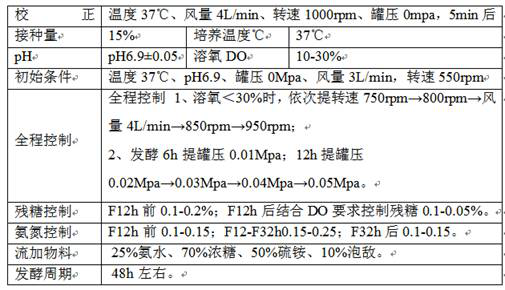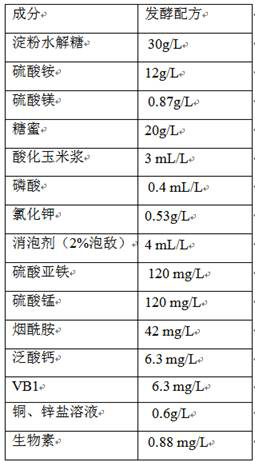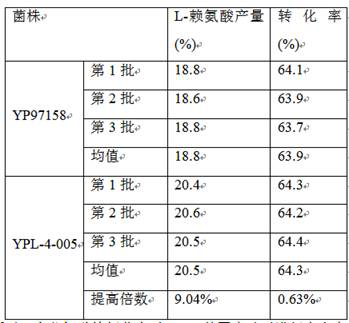A promoter nucleic acid sequence of sdaa gene, recombinant strain containing the nucleic acid sequence and application thereof
A technology for recombining bacterial strains and nucleotide sequences, which is applied in the fields of genetic engineering and microorganisms, can solve problems such as lack of directionality, poor predictability of strain performance, and difficulty in controlling gene mutation sites, so as to facilitate popularization and application and increase production.
- Summary
- Abstract
- Description
- Claims
- Application Information
AI Technical Summary
Problems solved by technology
Method used
Image
Examples
Embodiment 1
[0046] Example 1 Contains point mutations sdaA Gene promoter region transformation vector pK18-PsdaA A(170)C build
[0047] According to the genome sequence of Corynebacterium glutamicum ATCC13032 published by NCBI, two pairs of primers for amplifying the sdaA gene promoter region fragment were synthesized, by replacing the sdaA gene promoter region (SEQID NO: 1) in the strain YP097158 background with alleles Introducing point mutations. The primers were designed as follows (synthesized by Shanghai Invitrogen Company):
[0048] P1: 5' CCGGAATTC ATTCGCGGATCTCCGTTTA AG 3' (EcoR I) (SEQ ID NO: 3)
[0049] P2: 5' CTTTACAGGG GCTGGGTCAT GTCTTG 3' (SEQ ID NO: 4)
[0050] P3: 5' CAAGAC ATGACCCAGC CCCTGTAAAG 3' (SEQ ID NO: 5)
[0051] P4: 5' ACATGCATGC AACGTCAGGG AATACGACAC 3' (Sph I) (SEQ ID NO: 6)
[0052] Using Corynebacterium glutamicum ATCC13032 as a template, PCR amplification was carried out with primers P1 / P2 and P3 / P4 respectively. PCR system: 10× Ex Taq Buffer 5 μL, dN...
Embodiment 2
[0053] Embodiment 2 comprises the PsdaA of point mutation A(170)C Construction of the strain
[0054] Allelic replacement plasmid pK18-PsdaA A(170)C Electrotransformation into the patented strain YP97158 of L-lysine producing bacteria (for its construction method, please refer to WO2014121669A1; it was confirmed by sequencing that the strain retained the wild-type sdaA Gene promoter), the single colonies produced by culture were identified by primers P1 / M13F, and the strains that could amplify a band with a size of 1300bp were positive strains. The positive strains were cultured on a medium containing 15% sucrose, and the single colonies produced by the culture were respectively cultured on a medium containing kanamycin and a medium without kanamycin, and cultured on a medium without kanamycin The strains that grow on culture medium but do not grow on medium containing kanamycin are further identified by PCR using the following primers (synthesized by Shanghai Invitrogen Co...
Embodiment 3
[0058] Example 3 L-lysine fermentation experiment
[0059] The bacterial strain YPL-4-005 constructed in Example 2 and the original bacterial strain YP97158 were used in the BLBIO-5GC-4-H type fermenter (purchased from Shanghai Bailun Biotechnology Co., Ltd.) with the medium and table shown in Table 1. The control process shown in 2 was used for fermentation experiments. Each strain was repeated three times, and the results are shown in Table 3.
[0060] Table 1 Fermentation medium formula
[0061]
[0062] Table 2 Fermentation control process
[0063]
[0064] Table 3 L-lysine fermentation experiment results
[0065]
[0066] The results are shown in Table 3. Point mutation PsdaA was carried out in the sdaA gene promoter in Corynebacterium glutamicum A(170)C , contribute to the improvement of L-lysine production.
PUM
 Login to View More
Login to View More Abstract
Description
Claims
Application Information
 Login to View More
Login to View More - R&D
- Intellectual Property
- Life Sciences
- Materials
- Tech Scout
- Unparalleled Data Quality
- Higher Quality Content
- 60% Fewer Hallucinations
Browse by: Latest US Patents, China's latest patents, Technical Efficacy Thesaurus, Application Domain, Technology Topic, Popular Technical Reports.
© 2025 PatSnap. All rights reserved.Legal|Privacy policy|Modern Slavery Act Transparency Statement|Sitemap|About US| Contact US: help@patsnap.com



